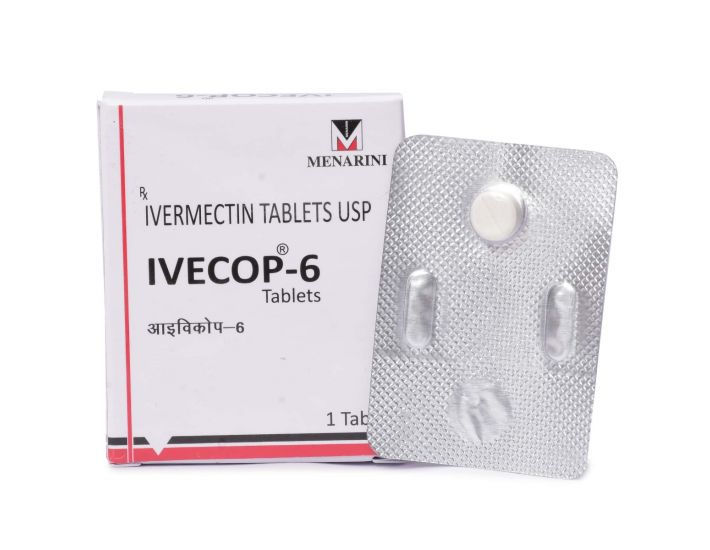Safety of inhaled ivermectin as a repurposed direct drug for the treatment of COVID-19...
- info
- Sep 28, 2021
- 10 min read
Safety of inhaled ivermectin as a repurposed direct drug for the treatment of COVID-19: A preclinical tolerance study 1. Introduction
The COVID-19 pandemic is arguably the world's most serious health epidemic and the biggest threat since the Second World War. Currently, available protocols for managing COVID-19 patients depend mainly on supporting patients, alleviating symptoms, and preventing respiratory and other organ failures. Although remdesivir, received Food and Drug Administration (FDA) authorization for the treatment of hospitalized COVID-19 patients, there are currently no other specific therapies approved by the FDA [1] for this indication. Thus, the world is in great need of developing novel medications or repurposing (repositioning) existing ones for other therapeutic applications to develop safe and efficient treatments for COVID-19. Numerous previously available medications used as treatments for malaria (chloroquine and hydroxychloroquine) [2], [3], SARS-CoV (lopinavir and ritonavir) [4], [5], influenza viruses (favipiravir and oseltamivir) [6], [7], virus C hepatitis (ribavirin and sofosbuvir) [8], [9] and helminth/parasitic infections (ivermectin) were tested for treatment of COVID-19 [10], [11].

Ivermectin an FDA-approved antiparasitic drug that is used to treat several neglected tropical diseases, including onchocerciasis, helminthiases, and scabies [12], [13] has demonstrated an excellent safety profile. Ivermectin is a mysterious multifaceted 'wonder' drug that keeps shocking and exceeding expectations [14]. It was repositioned as a cancer drug [15], [16] and showed potent antiviral activity against Zika [17], HIV-1, and dengue [18] viruses. Ivermectin was reported to inhibit the replication of SARS-CoV-2 in cell cultures [19] possibly through an RNA-dependent RNA polymerase (RdRp)-ivermectin complex, which is recognized as the most possible target for the in-vitro anti-SARS-CoV-2 activity of ivermectin [20], thus inhibiting coronavirus replication and transcription inside the host cell [21]. Noteworthy, available pharmacokinetic data from clinically relevant and excessive dosing studies indicate that the SARS-CoV-2 inhibitory concentrations for ivermectin are much argued. Some authors reported that effective concentrations are not likely attainable in humans [22] and suggested that the required plasma concentrations necessary for the antiviral efficacy as detected in-vitro requires the administration of 100-fold the doses approved for use in humans [23], [24] due to its poor solubility [25] and bioavailability [26]. While others reported that ivermectin achieves lung concentrations over 10-fold higher than its reported EC50 [27]. Even though ivermectin tends to accumulate in lung tissue, expected systemic plasma, and lung tissue concentrations are much lower than the in-vitro calculated half-maximal inhibitory concentration (IC50) against SARS-CoV-2 (~2 µM) [28]. SARS-CoV-2-induced lung inflammation or injury could further greatly affect the ability of ivermectin to accumulate in the lung cells due to changes in the pulmonary microenvironment by inflammation provoked alterations in body temperature, enzymatic activity, and pH [29]. Hence, the advantages of lung accumulation for ivermectin may be hampered during treatment of severe SARS-CoV-2 infection
Furthermore, ivermectin neurotoxicity has been raised by Chaccour et al., especially in patients with COVID-19-induced hyperinflammation. Furthermore, drug interactions with potent CYP3A4 inhibitors (such as ritonavir) necessitate a careful evaluation of co-administered medications. Finally, evidence indicates that achieving significant ivermectin plasma levels with COVID-19 activity would necessitate potentially toxic rises in ivermectin doses in humans [23].
Local ivermectin administration directly to the lung may represent a potential approach for the difficulties caused by the multiple biological barriers encountered in drug delivery. Over the past two decades, pulmonary drug delivery has gained much interest, offering an interesting route having several advantages over other drug delivery routes including high drug-loading efficiency, and enhanced absorption to the lung epithelium making the inhalation route an ideal drug delivery approach [30].
Many pharmaceutical researchers are interested in cyclodextrin (CD) complexation as its effectiveness has been demonstrated in improving the solubility, stability, and bioavailability of a variety of lipophilic active compounds [31], [32], [33], [34], [35], [36]. CDs can form stable complexes with protein hydrophobic moieties that are vulnerable to aggregation, participate in hydrogen bonding with proteins, and have an intrinsic surfactant-like effect [37]. Researchers investigated the possibility of using CDs to improve the solubility of non-polar medications for inhalation therapy. The superiority of hydroxypropyl-β-cyclodextrin (HP-β-CD) over other CD derivatives has been identified, and it has been documented to demonstrate surface-active properties that are needed for effective protein surface protection through spray freeze-drying [38], [39], [40].
HP-β-CD was used to formulate inhaled dry powder for salbutamol, and results confirmed the successful application of CDs in promoting lung delivery of drugs [41]. Furthermore, Guan et al., reported the successful use of naringenin-HP-β-CD inhalation solution for nebulization to achieve a rapid response with a reduced dose for the treatment of cough [42]. Milani et al. reported the ability to enhance the stability and aerosolization for the freeze-dried IgG formulation using HP-β-CD which acted as a water-replacement agent or a surfactant [43]. The use of HP-β-CD in the treatment of chronic obstructive pulmonary disease has been reported via the inhalation route, owing to its ability to decrease the production of CXCL-1, a potent chemotactic agent for neutrophils in various inflammatory conditions and LPS-induced peribronchial inflammation [44].




Comments